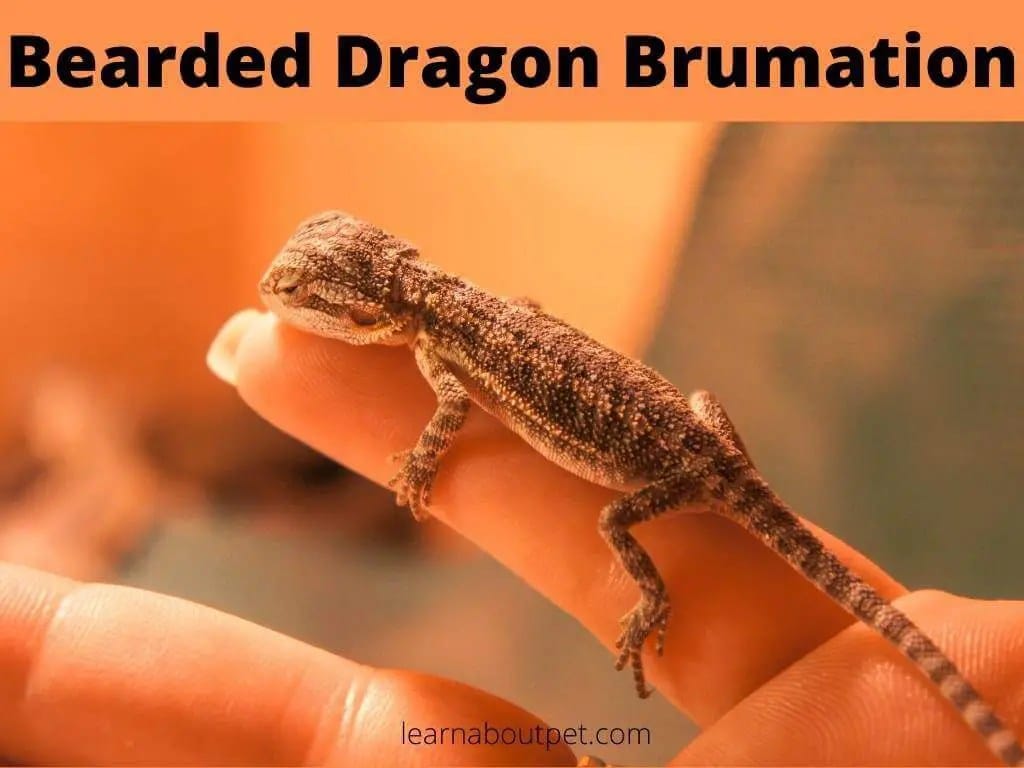Is your beardie acting a little…off? Less interested in their greens? Maybe sleeping more than usual, or disappearing into their hide for days? Don’t panic! They might just be preparing for their annual “winter nap,” called brumation. Think of it like a reptile version of hibernation. This guide is your Bearded Dragon Brumation Handbook – it’ll tell you everything you need to know about this totally normal behavior. We’ll cover what brumation is, how to tell if your dragon is doing it (and not just sick), and most importantly, how to take care of them while they’re snoozing. So, let’s get started and learn how to help your scaly friend through their winter slowdown!
Understanding Brumation
What is Brumation?
Brumation is a natural period of dormancy, or reduced activity, in reptiles, similar to hibernation in mammals. It’s triggered by changes in light and temperature, usually as the days get shorter and cooler—even if you maintain a consistent temperature in their enclosure. This is a throwback to their ancestors’ survival mechanisms in the Australian outback. Brumation helps them conserve energy during times when resources are scarce. The length of brumation varies significantly between individual dragons, lasting anywhere from a few weeks to four months, and sometimes even longer. Some dragons may brumate deeply, appearing almost lifeless, while others may experience a lighter brumation, occasionally emerging for short periods. It truly is a personalized experience for each beardie! Brumation is most common in dragons over 10 months old but rare and generally discouraged in those under 10 months.
Recognizing the Signs
So, how can you tell if your dragon is brumating? Watch for these common signs:
- Decreased Activity: Your usually active dragon might become less interested in exploring, preferring to stay hidden.
- Reduced Appetite: A significant decrease in appetite, or even refusing food altogether, is common during brumation.
- Increased Sleeping: You’ll probably notice your dragon sleeping much more than usual, often tucked away in their hide.
- Changes in Color (sometimes): Some bearded dragons may appear slightly duller or darker in color during brumation, although this is not always a noticeable change.
Brumation vs. Illness: A Critical Distinction
It’s important to distinguish between normal brumation behavior and signs of illness. While a brumating dragon will be less active, they should still respond to gentle handling and appear generally healthy, albeit sleepy. Illness, on the other hand, often presents additional symptoms. The following table summarizes key differences:
| Feature | Brumation | Illness |
|---|---|---|
| Activity Level | Decreased, but responsive to gentle handling | Severely reduced or unresponsive even to touch |
| Appetite | Reduced or absent, gradual decrease | Sudden and significant decrease, sometimes accompanied by increased thirst |
| Other Signs | Possible slight color changes, longer sleep, increased hiding | Respiratory issues (wheezing, open-mouthed breathing), discharge, rapid weight loss, unusual lumps, changes in stool |
| Duration | Several weeks to several months (variable), rarely over 4 months | Variable, depending on the illness |
If your dragon exhibits any of the signs associated with illness—rapid weight loss, difficulty breathing, discharge from the eyes or nose, changes in stool (color, consistency, frequency), unusual lumps, or other concerning symptoms—it’s crucial to seek veterinary care immediately. These are not typical brumation behaviors and could indicate a serious health problem.
Caring for Your Brumating Dragon
Preparing for Brumation
If you think your dragon is preparing to brumate, create a supportive environment by:
- Gradual Temperature Reduction: Over several days, gradually lower the temperature in the enclosure to mimic the cooler temperatures of winter. Aim for the low 70s Fahrenheit.
- Provide a Secure Hide: Offer a comfortable and secure hide, such as a cave or hide box, where your dragon can retreat and feel safe during brumation.
Care During Brumation
Once your dragon is brumating:
- Minimize Handling: Resist the urge to handle them too much. Let them rest undisturbed as much as possible. Brief handling for health checks is acceptable, but limit it to a few minutes, a few times a week at most. Observe your dragon for signs of stress during handling.
- Hydration is Key: Offer fresh water regularly, even if they don’t seem interested. Dehydration can be a concern during brumation. Weekly lukewarm baths can also assist with hydration and encourage bowel movements.
- Monitor Weight and Condition: While some weight loss is expected, monitor for significant or rapid weight loss, which is a warning sign. Regularly observe their overall appearance and behavior for any changes.
Post-Brumation Care
As the days get longer and warmer, your dragon will naturally emerge from brumation. Support their transition back to normal activity by:
- Gradual Temperature and Light Increase: Slowly increase the temperature and lighting in their enclosure to simulate the arrival of spring.
- Resume Regular Feeding: Offer small amounts of easily digestible food initially, as their appetite will return gradually.
- Veterinary Check-up: A checkup with a reptile veterinarian after brumation is a good idea to ensure your dragon is healthy and ready for the active season.
Brumation: Wild vs. Captive
Wild bearded dragons brumate based on the natural rhythm of Australian seasons (winter typically runs from May to August). However, captive dragons’ brumation is influenced by the controlled environment of their enclosure, specifically temperature and lighting. Because captive conditions are generally more stable, the brumation period may be shorter or less intense than in their wild counterparts.
Ongoing Research and Future Understanding
There’s still much we are learning about brumation in bearded dragons, and ongoing research continually refines our understanding. Some experts believe factors beyond temperature and light—hormonal changes, age, overall health—might also influence brumation. While the information provided here reflects current knowledge, it’s important to remember that our understanding of this complex process is evolving.
fape stands for
figurative language anchor chart
- Unlocking 2-Letter Words with U: The Definitive Guide - April 4, 2025
- Unlock Words with the Letters THREE: Top Unscramble Tools 2025 - April 4, 2025
- Master Scrabble: X & Z Words for High Scores - April 4, 2025
















